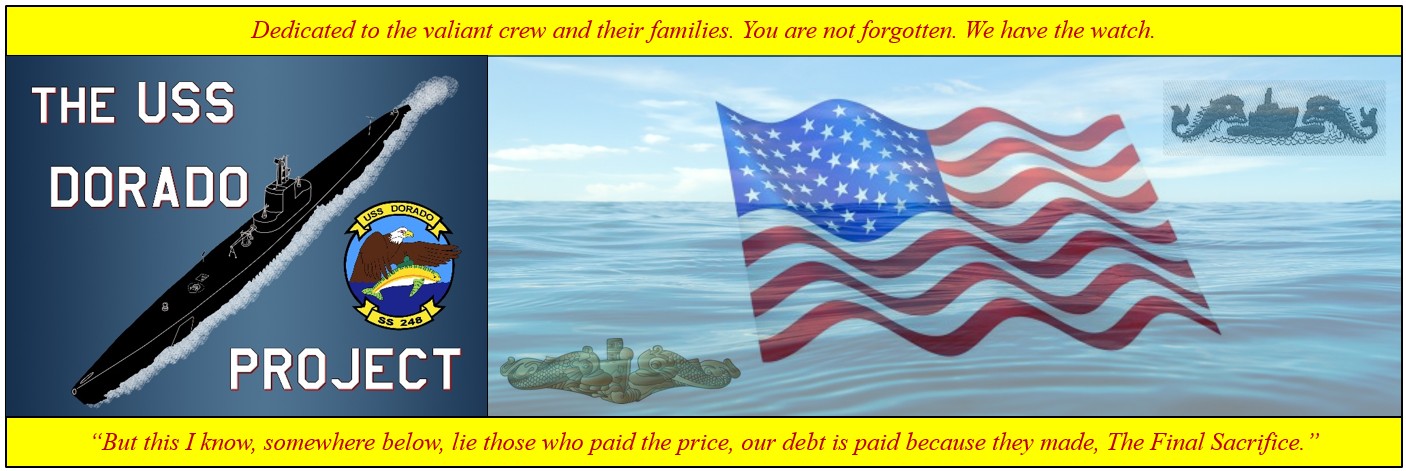Dorado (SS-248)

| Main Page | Latest News & Updates | The Submarine | The Crew | Photographs | The Loss Scenario | The Myths | The Aircraft | Research Documents |
Introduction to the Gato-class submarines
A "fleet submarine" was a large submarine intended to operate directly with the main fleet battle line composed of battleships, aircraft carriers, cruisers, and destroyers. Their role was to range out ahead of the battle line and act as scouts. They were to find the enemy and report on their composition, course, and speed. They were to then conduct attrition attacks designed to weaken the enemy fleet prior to the main gun battle with the U.S. battle line. To accomplish this mission the submarines had to have a long range, high speed, and be heavily armed. The subs also had to be quite large in order to fit all of the necessary equipment to achieve these qualities into the pressure hull.
The USN's earliest submarines were of the harbor defense, coastal defense, and patrol types and thus were too small, too underpowered, and lacked the necessary range to conduct the fleet submarine role. The Navy's first attempt to build a fleet submarine was the T-class of 1916 and 1917. The state of the art in those years lacked the technology needed to provide the powerful engines and refined hull form required to get the high speed and sea-keeping qualities that the boats needed. The T-class was an expensive failure, but the Navy learned was wasn't going to work and rolled those lessons into future construction, which would become the V-class submarines of the 1920s and early 30's.
The nine V-class submarines ended up being largely experimental in nature, as the Navy tinkered with several concepts brought out by WW I. The class not only consisted of fleet submarines, but also a specialized mine layer, two commerce raiding cruiser submarines, an open ocean patrol submarine, and two small fleet boats. The boats were either too big, too small, or they were too experimental in nature to be fully successful. All of them were underpowered, as diesel engine technology in the United States badly lacked in comparison with European designs.
Class Construction
The Victory Yard
USS Dorado (SS-248)
Specifications
Sea Trials
Page created by:
Thaddeus Weaver & David Johnston
©2025 - Thaddeus Weaver & PigBoats.COM
West Warwick, RI, Norfolk, VA
ussdoradoproject@gmail.com